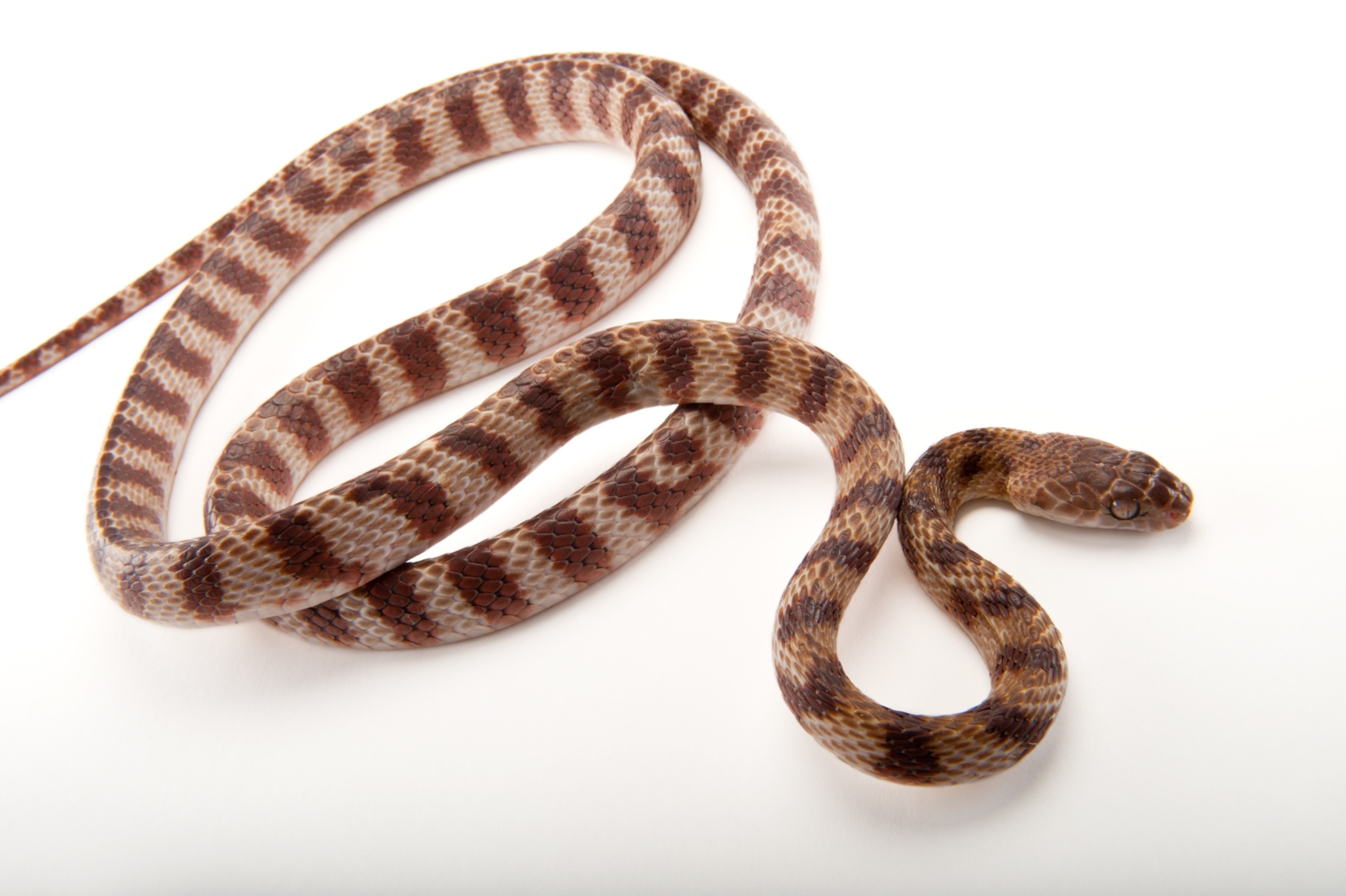
Invasive snakes move their bodies like lassos, a totally new mode of locomotion
The discovery has stunned herpetologists and may help explain the brown tree snake's damaging impact on Guam's ecosystems.
Snakes can sidewind over sand, leap between trees, and undulate underwater. Now, scientists have recorded an entirely new way of moving—forming a lasso-like loop to shimmy up a pole.
The brown tree snake, a tree-dwelling reptile native to Australia, Papua New Guinea, and several Pacific islands, was inadvertently brought to Guam after World War II, likely by cargo ships.The snakes spread rapidly, obliterating populations of local wildlife and driving 10 native bird species extinct. They have since inspired many attempts to control the invaders, from air-dropping drug-filled mice to snake-detecting dogs, but none have been successful.
In 2016, Colorado State University ecologists Julie Savidge and Tom Seibert had another idea: Installing eight-inch-wide metal cylinders—a type of baffle used to deter wildlife—at the base of bird nest boxes at the U.S. Geological Survey’s brown tree snake laboratory.
They suspected the nocturnal snakes couldn’t move up the smooth cylinders to prey on Micronesian starlings, a species that is not endangered but is dwindling on Guam. (Read more about invasive species’ impact on Guam.)
They were wrong. Video cameras placed near the experimental bird boxes revealed a snake roping its body around the pole, using this “lasso” to wiggle upward.
“We just kind of looked at each other in shock. I mean, this wasn't something a snake was supposed to be able to do,” says Seibert.
They’ve dubbed this newfound behavior “lasso locomotion” and detailed its mechanics in a paper published in January in Current Biology. It’s the fifth officially recognized type of snake movement, in addition to rectilinear, or moving in a straight line; lateral undulation, the classic snake slither; sidewinding, which is used to travel across sand; and concertina locomotion, the accordion-like climbing motion.
It’s “so unusual and wild,” says Sara Ruane, an evolutionary biologist at Rutgers University who not involved with the study. “I couldn’t get over it.”
Snakes on a pole
After witnessing the footage of the snakes lassoing themselves up the pipes in 2016, Savidge and Seibert called in Bruce Jayne, a biologist at the University of Cincinnati, to ask if he had ever seen anything like this in his 40-year career. “I was simultaneously flabbergasted and mystified,” says Jayne, a study co-author.
But because it was a choppy time-lapse video, Jayne needed to see clearly how the snakes were climbing the pole. Seibert returned to Guam in 2019 to set up a new experiment. He erected a steel duct pipe in a small pen, enclosed with five-foot-tall walls, and placed a dead mouse on top as bait. Then he released 15 wild-caught brown tree snakes into the pen. Five of the snakes climbed the pipe, which the researchers filmed in high definition. (See 22 spectacular pictures of snakes.)
In the footage, Jayne noticed a “gripping region” where the typically four-foot-long snake’s body crosses over itself as it’s climbing. When wriggling up trees, arboreal snakes usually need two gripping regions, which they achieve by wrapping their bodies twice around the trunk—a process called concertina locomotion.
But in the newly discovered lasso locomotion, the snake uses its one gripping region as an anchor, allowing it to wrap its body around only once, like a lasso. With this solid base, the snake then forms small bends in its body in wave-like motions, slowly propelling it upward.

But it isn’t easy for the snakes, which are always searching for food, Jayne says.
“Slipping was actually fairly common, so even though they can make upward progress,” he says, this is likely “a really hard thing for these snakes to do.”
“Still much to learn”
This form of locomotion has only been recorded in brown tree snakes climbing human-made poles in Guam, and so it’s not known whether it occurs in their native habitat or in other species, the authors caution.
But they surmise this unique movement—and ability to access prey in the treetops—is another addition to its already diverse repertoire, one that could help explain the snakes’ devastating impact on Guam’s ecosystems.
“There’s a whole suite of characteristics of this snake that have made it successful,” Savidge says, such as its wide-ranging diet and agility, which includes lunging through the air between tree branches. (Learn more about “flying snakes.”)
Savidge says this discovery led them to test a new ice cream cone-shaped baffle that seems to thwart the brown tree snakes from nest boxes. This design, which creates an angle that would make it more difficult for the snakes to climb, will be the subject of further research.
Ruane adds that even though brown tree snakes are heavily researched, their newfound locomotion would likely have gone unnoticed were it not for the video footage.
“It goes to show,” she says, “there's still so much to learn, even in well-known species.”





